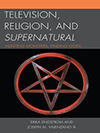- Author(s): Andrew Small
- When: 2016-04
- Where: Journal of Religion & Film
The purpose of this article is to begin drawing attention to the strong likelihood that Freud’s Totem and Taboo (1913) contributed important ideas to the creation of La Promesse (1996) by Luc and Jean-Pierre Dardenne. In the current article, we take note of just two of its most important aspects: animism, and the childlike recurrence of totemism. In La Promesse, these concepts are elaborated in relationship to a small African statue present in the home of the West African illegal immigrants, Assita and Hamidou. The sculpture – which Freud would call a fetish – is a locus of mysterious spiritual forces (Freud’s “animism”), which, together with Assita, contribute to bringing Igor to a greater personal and spiritual maturity. Igor eventually rejects his father’s world (which casually includes the Christian God, whenever it suits the father’s needs), and freely accepts affiliation with his new pseudo-mother Assita and the blend of African spirituality which is part and parcel of her world. The film’s narrative is given considerable depth due to the inclusion of complex echoes of the sacrifice of Abraham from Biblical culture, and the oedipal structures of tragic self-discovery from Ancient Greece. The directors skillfully empower the West African statue as a catalyst activating all these layers of meaning.









